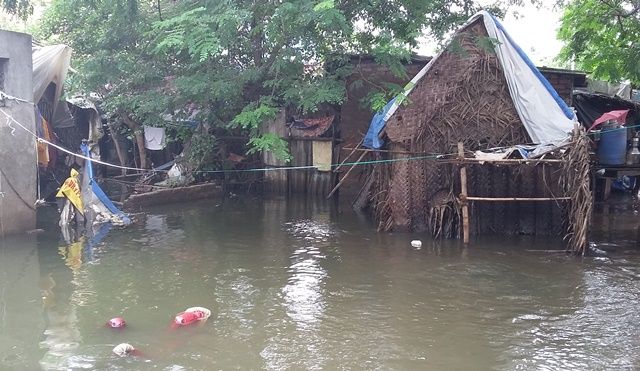Dietmar Henning
Gradually, more and more details of auto maker VW’s systematic fraud concerning emissions test results are coming to light. Behind the scenes, the VW board and the trade union representatives on the works council are working out how best to pass the resulting costs onto the workforce through job losses and wage cuts.
In September, it was revealed that VW had used software to falsify the nitrogen oxide emission results of some 11 million diesel vehicles worldwide. In early November, VW then admitted to “irregularities” in the carbon dioxide (CO2) levels in its diesel and gasoline engines. CO2 is principle greenhouse gas that contributes to climate chage. In addition to the “legal” tricks used to conceal real exhaust emission values, the reported results were simply falsified in the test procedures. A total of 800,000 vehicles are said to be affected.
Two weeks ago, VW distributed a list containing a “critical overview of CO2 values for 2016 models”. The business daily Bilanz from Springer-Verlag evaluated these, finding it covered a total of 430,000 cars delivered since the spring, and which for the most part are still at dealerships. It is noteworthy that in addition to the many models with diesel engines, more models are included with petrol engines than were previously known.
The manipulated results over the last six to seven years affected at least 130 models, meaning that blame cannot be attributed to a small group of senior executives and developers. This is large-scale fraud, requiring a high level of criminal energy and numerous accomplices in the upper echelons of VW.
It is completely implausible that the works council, which stresses at every opportunity that it closely collaborates with the company’s executive board, was not involved. It turns out that Germany’s much-vaunted “social partnership” between unions and employers is a veritable conspiracy against the workers—both car makers and car buyers.
Now the exhaust scandal is to be used to enforce the long-planned restructuring of the VW group at the expense of around 600,000 employees worldwide. VW CEO Matthias Müller announced that all VW expenditure would be under scrutiny. Last Friday, he announced that investment plans would be slashed. The company will only invest a maximum of €12 billion in the coming year. A year ago, the projection was an average of €16 billion per year through 2019.
Above all, it is the core VW brand that will be affected. The construction of a planned design centre in Wolfsburg will be postponed; the construction of a paint shop in Mexico is to be “reviewed”. Cuts are also planned in the model range. It is still unclear how much the company will have to pay out for the exhaust fraud. Estimates range from €20 billion to almost €100 billion.
In the US, VW has offered those customers affected by the exhaust scandal—some half a million—an indemnity of $1,000—half of which can only be redeemed at VW dealerships. This “good-will” action meant to placate VW’s US customers, is aimed especially at the authorities.
US environmental agencies had submitted deadlines to VW for proposed reductions in the nitrogen oxide emissions of diesel engines. VW has now admitted that the emission values have also been manipulated for both the two- and three-litre engines in VW, Audi and Porsche models. The company said that it had not disclosed a total of three computer programmes in the test procedures.
On November 16, company representatives held discussions with the Investigation Commission of the Ministry of Transport at the VW headquarters in Wolfsburg concerning possible solutions to the exhaust fraud. On Monday of this week, speaking to a thousand executives in Wolfsburg, VW CEO Müller then announced that solutions had now been confirmed for more than 90 percent of the affected vehicles in Europe. The cost of retrofitting was “technically, mechanically and financially manageable.” In cars with 1.6-litre diesel engines, no “essential interventions” in the engine were needed. In addition to a software update, only “relatively simple changes” to the air grille or the air filter cartridge were needed, Müller said.
If this is correct—and not the result of a questionable deal between the German authorities, the EU authorities and VW—then the company has placed the jobs of tens of thousands at stake for savings of just a few euros per car.
However, all the fines, tax arrears, conversion costs and even the possible repurchase of the affected vehicles hinted at by the US authorities are nothing compared to the consequences of a possible downturn in sales due to the exhaust gas scandal.
As a result, the VW group works council and the IG Metall union are working behind the scenes to deal with this eventuality. The works council chairman, Bernd Osterloh, together with the VW board have the task of calming the situation. Osterloh is spreading reassurances in the press. He told theSüddeutsche Zeitung (SZ) that VW had a diesel problem, not a sales problem, and concluded, “Jobs will only be reduced if we sell fewer cars.”
But this is just what it currently looks like. Since the beginning of the year, 4.84 million Volkswagen vehicles were delivered, a decline of 4.7 percent compared to 2014. In all 12 Group brands, the decline was 1.7 percent, down to 8.26 million cars.
According to a November 17 report by the industry association Acea, new vehicle registrations for the core VW brand in October fell by 5.3 percent compared to the same month last year. The VW brand Skoda sold 2.6 percent fewer cars, and Seat sold 11.4 percent fewer cars than the year before. Because the gap between order and delivery is often months, automotive experts expect that the exhaust scandal will be reflected even more strongly in later sales figures.
In a joint interview with Osterloh, VW brand chief Herbert Diess was more restrained. What was clear was only that there would be “losses” in employees’ special payments. He said he “believed” the “core workforce” could be kept. “We must be careful with taking on temporary workers at the present time.” VW employs about 7,000 temporary workers in Germany alone.
Osterloh confirmed this. The SZ quotes him as saying, “If sales go down, then we have less employment—that’s clear. Then we will also have to discuss how to deal with the issue of temporary work.”
Last Saturday, the FAZ also brought short-time working into the debate. “If the cars produced are only stockpiled, the spectre of short-time working will arise in Wolfsburg.”
In other words, the works council and top management are preparing massive cuts for employees. According to a report from the Reuters news agency, VW CEO Müller and works council chief Osterloh agreed on the next steps for “investment and capacity planning” on November 9. Müller emphasised that he attached great importance to the experience of the works council representatives. Osterloh said the staff stood behind the company. Since then, a series of meetings have taken place between the Management Board and employee representatives about which no information has so far been given to the workforce.
This was preceded by a letter from Osterloh to the Board, which criticised Diess, along with the board members, of sketching out the savings plan without involving him. Osterloh said in the SZ interview, “We want to be involved.”
The works council and IG Metall play a key role. They are the ones who plan out the company restructuring and the strategy to implement it. In a joint statement on October 20, they wrote, “The IG Metall and the works council will jointly develop a concept in the coming weeks. We will describe the necessary changes in our own position paper and put this forward for discussion. The involvement of management is important to us.” IG Metall and the Volkswagen Group works council would “continue to consistently follow a course in which employment and competitiveness remain equal corporate objectives”.
At the end of the year, works council head Osterloh had wanted to take over the post of VW personnel manager, with its €7 million remuneration package. In Manager Magazin in May, he called for a “leaner Group structure” and threw his hat in the ring as a successor to the current personnel manager, Horst Neumann. But that was before the crisis. Now IG Metall has decided that he should provisionally continue as works council chief in order to enforce the restructuring programme, including job losses and wage cuts, and to keep the workforce under control.
But the highly paid top job is being kept open for him. Last week, it was announced that VW CEO Müller would “temporarily” take over Neumann’s tasks. The conspiracy against the workers continues.



